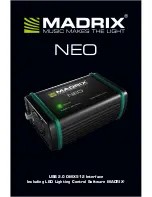
12
AUTO 1:
AUTO 1
is the default setting. The optimum settings are
determined automatically.
Heat-up curve in auto-tuning control (
AUTO 1
):
°C
t
°C
t
°C
t
°C
t
Fig. 6
°C
t
Proportional coefficient of PID (
Kp 1
):
Integral time of PID (
Ti 1
):
Differential time of PID (
Td 1
):
Fig. 5
The proportional coefficient
Kp
is the controller ampli-
fication and determines how strongly the control devia-
tion (the difference between the target temperature and
actual temperature) directly affects the control variable
(on-time of the heater).
Kp
values that are too large can
lead to the controller overshooting.
The integral time
Ti (s)
is the correction time and deter-
mines how strongly the duration of the control devia-
tion affects the control variable.
Ti
compensates an ex-
isting control deviation. A high
Ti
means a smaller and
slower effect on the control variable.
Ti
values that are
too small can lead to instability of the controller.
The differential time
Td (s)
is the derivative time and de-
termines how strongly the rate of change of the control
deviation affects the control variable.
Td
compensates
for rapid control deviations. A high
Td
means a smaller
and slower effect on the control variable.
Td
values that
are too small can lead to instability of the controller.
AUTO 0:
For special requirements,
AUTO 0
can be used with
manual adjustment of the control parameters.
If the PID control (
AUTO 0
) option is selected, the fol-
lowing items including
Kp 1
,
Ti 1
and
Td 1
could be
set. Otherwise they are not displayed in the menu list.
Note:
Inappropriate settings may produce the follow-
ing heat-up curves:
Kp too high
Ti too low
Td too high
Kp too low
Ti too high
•
Alarm and key tone (BEEP):
BEEP 0:
no alarm and key tone
BEEP 1:
alarm and key tone is activated
•
Calibration and adjustment (CALI):
CALI 0:
Reset calibration
CALI 2:
2-point calibration
CALI 3:
3-points calibration
Example: 2-point calibration:
Dip the temperature sensor of the reference measuring
instrument into the bath fluid:
Select 2-point calibration in the menu. Press the “
OK/
Pump
“ button (
G
) to start the 2-point calibration.




































